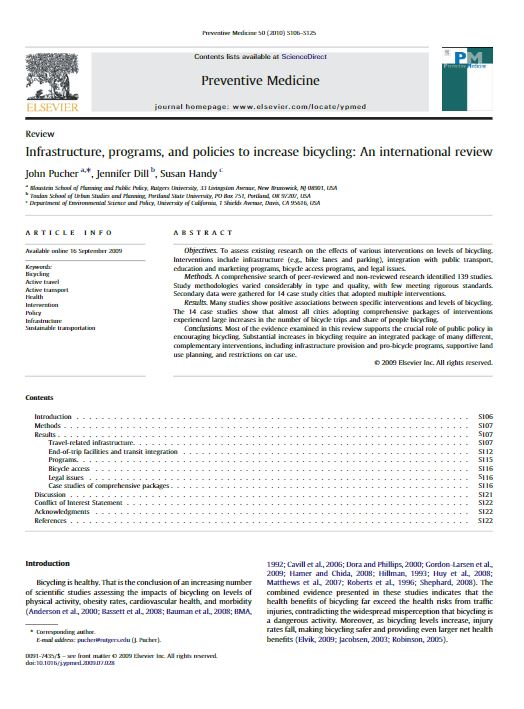Pucher, J., Dill, J., and Handy, S. 2010, “Infrastructure, Programs and Policies to Increase Bicycling: An International Review,” Preventive Medicine. vol. 50, no. S1. pp S106-S125.
Abstract
Objectives
To assess existing research on the effects of various interventions on levels of bicycling. Interventions include infrastructure (e.g., bike lanes and parking), integration with public transport, education and marketing programs, bicycle access programs, and legal issues.
Methods
A comprehensive search of peer-reviewed and non-reviewed research identified 139 studies. Study methodologies varied considerably in type and quality, with few meeting rigorous standards. Secondary data were gathered for 14 case study cities that adopted multiple interventions.
Results
Many studies show positive associations between specific interventions and levels of bicycling. The 14 case studies show that almost all cities adopting comprehensive packages of interventions experienced large increases in the number of bicycle trips and share of people bicycling.
Conclusions
Most of the evidence examined in this review supports the crucial role of public policy in encouraging bicycling. Substantial increases in bicycling require an integrated package of many different, complementary interventions, including infrastructure provision and pro-bicycle programs, supportive land use planning, and restrictions on car use.
